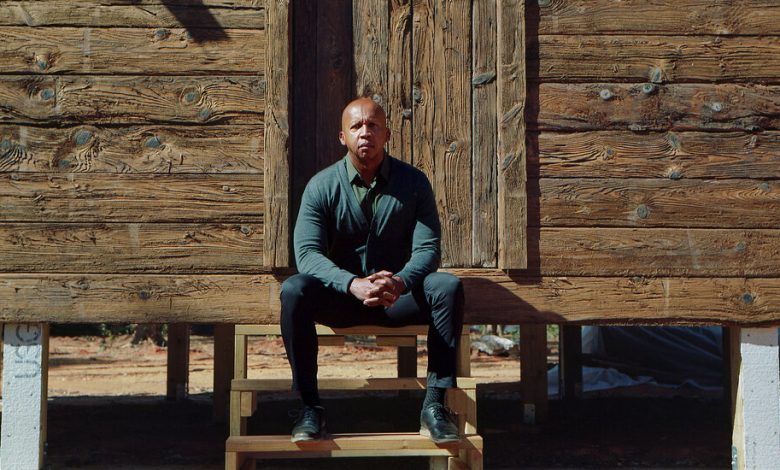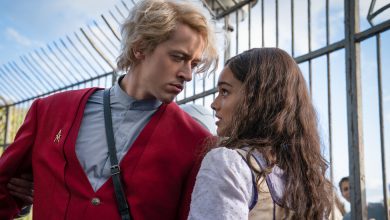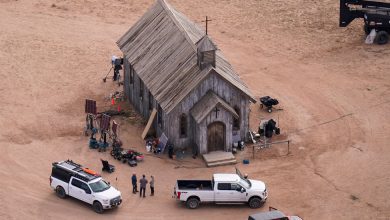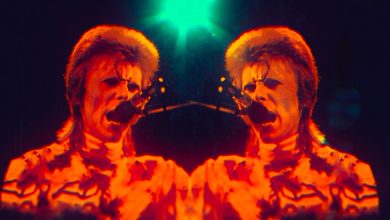Alabama Sculpture Park Aims to Look at Slavery Without Flinching

When the Freedom Monument Sculpture Park opens in Montgomery, Ala., in early 2024, on a bluff flanked by railroad tracks overlooking the Alabama River, visitors will be able to arrive by boat — retracing the footsteps of tens of thousands of Africans horrifically shipped, sold, then transported by rail in the 19th century.
The park is intended to take viewers on an unflinching and moving journey through the story of slavery, at a time when what can be taught in schools about Black history is being debated in many states across the country — including Alabama. The centerpiece will be a new national monument commemorating freedom: a 43-foot-tall, 150-foot-long wall, angled like an open book and inscribed with more than 120,000 distinct surnames documented in the 1870 census that were chosen by four million Black people emancipated after the Civil War. (“Washington” was most widely selected by people known previously only by their first names.)
For the approach to the monument, set in a clearing, there will be 48 sculptures by 27 artists — Wangechi Mutu, Theaster Gates, Rashid Johnson and Kehinde Wiley, among others. Their works, more typically displayed in the white cube of a contemporary art space, will be encountered in the wooded landscape along a circular route, punctuated with 18 collected artifacts and visual exhibits including a whipping post and two plantation dwellings once inhabited by enslaved people.
“The Alabama River was once a central corridor for the trafficking of enslaved people,” said Bryan Stevenson, the founder and executive director of the Equal Justice Initiative, a Montgomery-based human rights organization, and the creative force behind this new cultural space merging art and history on a resonant 17-acre site. “We had the most active slave-trading space in America.”
Stevenson, a public interest lawyer, says the “authenticity of place” provides a context that deepens the understanding of these sculptures and the narrative around them. It’s a similar strategy to how he approached the Equal Justice Initiative’s two other cultural sites, which opened nearby in 2018.
On a six-acre rise overlooking Montgomery, the National Memorial for Peace and Justice is the first public reflection space to acknowledge the history of racial terror lynchings in America. Visitors walk on a path through thousands of suspended coffin-like steel markers, each naming a victim and the county where the crime took place, an experience both harrowing and breathtaking.
Near Montgomery’s city square where slave auctions were held, the Legacy Museum uses film, images and first-person narratives to create a comprehensive and immersive history that draws a through-line from enslavement to segregation to issues of mass incarceration faced today. As part of a vast expansion in 2021, the museum now offers more meditative spaces. A new art gallery has nearly 100 works, including Glenn Ligon’s series “Runaways” and Gordon Parks’s photographs for Life magazine on segregation, that amplify sections of the museum dealing with those topics.
“When we thought about creating sites, I wanted them to be spaces that had as a goal truth-telling in a way that went beyond just what you learn and what you see, but that had resonance that was emotional and spiritual,” Stevenson said.
Currently, the Legacy Museum and National Memorial for Peace and Justice together draw almost 40,000 visitors a month and cost about $25 million to create. (Since 2018, several new hotels have opened in Montgomery.)
Stevenson expects overall attendance to increase with the opening of the sculpture park, which cost more than $5 million. It was funded largely by the major increase in donations to the Equal Justice Initiative in 2020 after the murder of George Floyd — support, the group notes, that has now fallen off.
Johnnetta Cole, president emerita of Spelman and Bennett colleges and director emerita of the Smithsonian’s National Museum of African Art, said she is “not aware of another set of sites or museum experiences quite like this.”
Cole acknowledged that not everyone gets up in the morning wanting to engage with the horrors of lynching and racial injustice, but she sees these legacy sites as places of hope. “No matter what our multiple identities are,” she said, “it is a place that says to us, If we confront what has happened in the past, we have the possibility of collectively writing a different story in the future.”
Born in 1959, Stevenson grew up in a poor rural area in Sussex County, Del., and remembers when lawyers came into his community in the ’60s and sued to open public schools for Black children. “That intervention changed everything,” said Stevenson, who was able to take college preparatory courses and went on to get his law degree at Harvard.
He founded the Equal Justice Initiative in 1989, initially with the mission to provide legal services to people on death row. “I saw this history of racial bias impacting them the most,” said Stevenson, whose 2014 memoir, “Just Mercy,” was made into a movie in 2019. It chronicles his defense of Walter McMillian, who was exonerated after being sentenced to die for a murder he didn’t commit.
To date, Stevenson and his team have won reversals, relief or release from prison for more than 140 wrongly condemned prisoners on death row.
The scope of the Equal Justice Initiative’s work expanded over a decade ago as it began to issue reports compiling comprehensive data on topics like the history of lynching that became the foundation of the cultural spaces. Most recently, Stevenson’s team acquired and digitized the 1870 census documents — the first time Black people were counted with a name rather than a number.
“Forty percent of the people adopted names associated with an enslaver because it would allow them to create kinship with families they had created in these places,” said Stevenson, who oversaw the design of the new monument. People will be able to use a QR code to find family names on the towering wall and further research their genealogy at the new visitor center for the park.
More than half of the sculptures for the park are site-specific commissions, including a new version of “Treesouls” by Alison Saar. Near the start of the route through the grounds, a work by Rose B. Simpson will pay homage to the site’s Indigenous history. The Ghana-based artist Kwame Akoto-Bamfo is contributing vividly expressive figurative groupings to be positioned in three areas of the park.
“My work is taking the bull by the horn — I don’t cover the intensity of it with symbolism,” said Akoto-Bamfo, who is depicting a shivering family that has just arrived in the Americas, then is seen laboring in the fields and finally standing before the monument. “You can never heal from an atrocity that you deny.”
Nikesha Breeze received a call from the Equal Justice Initiative in 2022, asking if she could recreate her piece “108 Death Masks” as an outdoor installation. The New Mexico-based artist brought her ceramic faces, each carved individually as a form of prayer to her ancestors, to Ghana to be translated into bronze. They will be installed at eye level in a single 80-foot line on a wall that visitors will pass just before reaching the monument.
“If there’s anywhere in the world I would want this work to be, it’s part of this narrative with E.J.I.,” Breeze said. “They’ve gone so far further than anyone in collecting and researching and presenting this story.”





